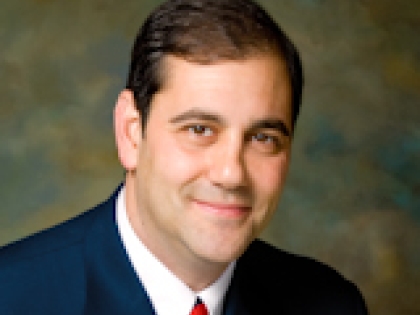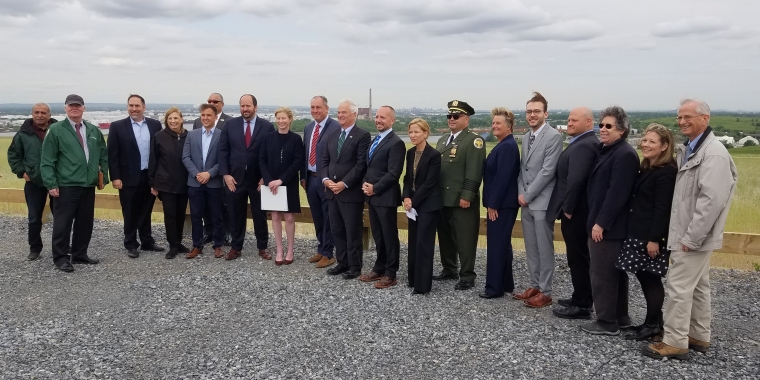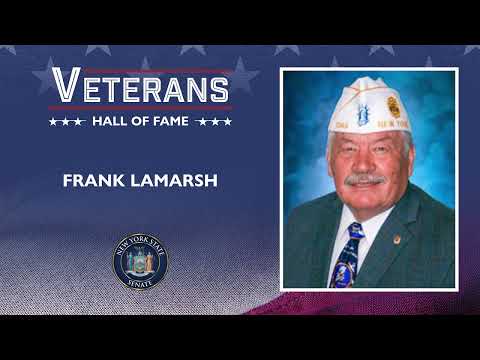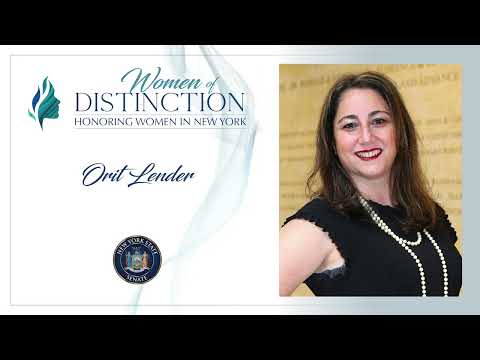
Sanitation, Parks & Department of Environmental Conservation Announce Final Certification of Fresh Kills Landfill Closure
May 25, 2022

150 million tons of garbage spread over 4 massive mounds that rise as tall as 225 feet. The travesty that became Fresh Kills Landfill is etched in the minds of all who lived in Staten Island throughout the second half of the twentieth century. Once a blight upon our community, the landfill is methodically being returned to nature. Now, 20 years after it received the final barge of household garbage, final certification for the closure has been achieved. It took leadership, foresight, and determination to ensure that this day finally arrived. I am grateful to have been part of the team with Mayor Bloomberg and the entire Staten Island delegation to see this to completion,” said New York State Senator Andrew Lanza.
NYC Department of Sanitation Commissioner Jessica S. Tisch, Parks Commissioner Susan M. Donoghue and New York State Department of Environmental Conservation (DEC) Commissioner Basil Seggos today announced the final certification of the closure of the Fresh Kills landfill, closing the chapter on what was once the world’s largest solid waste management site. The Commissioners made the announcement standing atop the former landfill nearly 20 years after the it received its final piece of debris from Ground Zero and months ahead of the opening of North Park, the first major phase of what will become a 2,200-acre park. Since 1986, the Department of Sanitation has invested $980 million to safely and responsibly close Fresh Kills landfill.
“There is no better cure for New York City’s recovery than our parks and open spaces. By transforming Fresh Kills landfill into a park, we are supporting that recovery and providing New Yorkers with access to clean, new green spaces,” said New York City Mayor Eric Adams. “This certification is a major milestone in delivering environmental justice and equity for the people of Staten Island, and the collaboration of DEC, DSNY, and Parks will benefit all New Yorkers.”
“For decades Fresh Kills was an environmental and health nightmare for the people of Staten Island, leaving one borough to bear the burden of handling New York City’s entire residential waste stream,” said Deputy Mayor for Operations Meera Joshi. “We must remember the lessons of Fresh Kills as we celebrate its transformation into a vast wildlife ecosystem and acres of splendid open space for all to enjoy. Thank you to Parks, Sanitation, and NYS DEC for your efforts to make this historic announcement possible.”
“Contained within this space is a massive science experiment, an infrastructure challenge, a wildlife refuge and a piece of history,” said NYC Sanitation Commissioner Jessica S. Tisch. “To us, this space looks like a rural countryside and bird habitat, but Staten Islanders who lived here decades ago know all too well the effects of waste and refuse. As we continue the transition from the world’s largest landfill to the city’s largest park to open in more than a century, let us recommit our City to our sustainability efforts to reducing the waste we send to landfills anywhere in the country.”
DEC Commissioner Seggos said, “The State Department of Environmental Conservation’s official certification closing all sections of the Fresh Kills Landfill clears a path for a brand new beginning, decades in the making. Working closely with our partners at NYC Sanitation and NYC Parks, we’ve reached a milestone in the transformation of this landfill into a sprawling park, rich with abundant natural resources and a new asset to the communities on Staten Island living in its shadow. We look forward to continuing to work together on this project and enhancing ongoing efforts to reduce, reuse, and recycle for the benefit of all New Yorkers.”
“The closure of the Fresh Kills Landfill is an unprecedented land reclamation project, and the NYC Department of Sanitation has gone above and beyond to complete this innovative work while partnering with us to advance the site's transformation into Freshkills Park,” said NYC Parks Commissioner Sue Donoghue. “Thanks to their efforts, along with the New York State Department of Environmental Conservation, the site has become a unique new landscape that’s seen a resurgence of wildlife – including more than 200 species of birds. We look forward to opening phase one of North Park this year as we continue to work with our partners to transform this former environmental blight into a sustainable urban oasis.”
“New York City continues to make steady and important progress in correcting the environmental mistakes of the past and there is no better sign of this than the important milestone marked today in the reimagining of the former Fresh Kills Landfill,” said New York City Department of Environmental Protection Commissioner Rohit T. Aggarwala. “Much like the Pelham, Penn and Fountain Landfills which have become parks, Fresh Kills has been responsibly closed and has been graded and planted with prairie grass and native plants to create a diverse ecosystem of coastal meadows, wetlands, and woodlands that has attracted a variety of birds and other local wildlife.”
“More than two decades later, I can still remember the awful stench of the landfill,” said Congresswoman Nicole Malliotakis. “It was the top quality of life issue for Staten Island for so many years and this final stage in its closure is something to be celebrated.”
“150 million tons of garbage spread over 4 massive mounds that rise as tall as 225 feet. The travesty that became Fresh Kills Landfill is etched in the minds of all who lived in Staten Island throughout the second half of the twentieth century. Once a blight upon our community, the landfill is methodically being returned to nature. Now, 20 years after it received the final barge of household garbage, final certification for the closure has been achieved. It took leadership, foresight, and determination to ensure that this day finally arrived. I am grateful to have been part of the team with Mayor Bloomberg and the entire Staten Island delegation to see this to completion,” said New York State Senator Andrew Lanza.
“One of the accomplishments I am most proud of during my time as a Councilman for Staten Island is the 20 Year Solid Waste Management plan that I authored and passed in 2006. After four years of multiple hearings and numerous negotiations, we passed a national model for environmental collection, cost effective containerization, and multi-modal shipment of the City’s residential waste. Thus, we relieved the pressures that existed at that time to re-open Fresh Kills. We took hundreds of thousands of long-haul tractor trailers off the City’s roads. We shut down environmentally discriminatory waste transfer stations across the City. We also laid out a map for waste reduction including expanded recycling, electronic and composting collection, and milestones to achieve zero waste. The people of Staten Island are all too familiar with the horrors of living in the shadow of ‘the dump,’ which is why I am extremely proud to have sponsored and shepherded through the Council the law that made the landfill ‘parkland forever,’ ensuring a better, more renewable, and greener future for our borough. As District Attorney, I whole-heartedly believe cleaner streets equal safer and healthier communities, so as we approach this important milestone in the closure of Fresh Kills, let us use this as an opportunity to renew and double our efforts to keep all of Staten Island’s beautiful public spaces clean for generations to come, and to never again allow the borough of parks to become a dumping ground for the City’s trash. This is truly a just day for Staten Island!” said Richmond County District Attorney Michael McMahon.
“This official announcement of the West Mound closing follows a 22-year odyssey to close this landfill once and for all. What stood as a vivid reminder to all Staten Islanders of an environmental disaster, is now a distant memory. In 1996, we set out to say enough is enough and Staten Island would no longer be New York City’s dumping ground. Some thought it was a pipe dream, some thought it was show boating, but we knew we were doing the right thing. Our work to close the landfill was the right thing to do for the next generation, and the generations to come. Now that the closure has been certified, we can move forward in witnessing a transformation of the West Mound becoming a park for all to enjoy. There were many, such as Guy Molinari, Rudy Giuliani, George Pataki, Jim Molinaro, Mike Bloomberg, among others, who did not stop until we got the job done. We did what was best for Staten Island. I also want to thank Commissioner Tisch, Commissioner Donoghue and Commissioner Seggos for recognizing this milestone closure for Freshkills.” said Staten Island Borough President Vito J. Fossella.
“I grew up seeing the growth of this landfill from my bedroom window. As the pile grew higher, the problems it brought to Staten Island grew deeper. It is comforting to know that future generations will see this property in a different light,” said City Councilmember Joseph Borrelli.
“Although it has been years since Fresh Kills operated as a landfill, it is nice to finally close that chapter in Staten Island history. The DEC certification confirms we are one step closer in making Fresh Kills Park a reality in the near future,” said City Councilmember David Carr.
“Embedded at Fresh Kills are the stories of generations of New Yorkers past. Rubble and fragments from the World Trade Center attacks have found their final resting place among its layers. As we recognize Fresh Kills’ past service to our city, I’m excited to celebrate its rebirth as what will grow to be a 2,200-acre public park, serving families for future generations to come,” said City Councilmember and Chair of the Committee on Parks and Recreation Shekar Krishnan.
“Today's Fresh Kills landfill closure certification represents a key milestone in the City’s ongoing path toward sustainability. With the upcoming renewal of the City's Solid Waste Management Plan, and the innovative Zero Waste legislation package that has major support in the Council, NYC is poised to close the book on landfills for good. I’m excited to work with the administration to build on this milestone and accelerate the work of achieving the City’s environmental justice, waste equity, and Zero Waste goals,” said Council Member and Chair of the Committee on Sanitation and Solid Waste Sandy Nurse.
From 1948 through 2001, the 2,200-acre landfill received the bulk of New York City’s trash, becoming by 1991 New York City’s only operating landfill receiving residential refuse. During this time, more than 150 million tons of solid waste were shipped to Fresh Kills, forming four massive mounds as high as 225-feet tall and still settling as some of this solid waste turns to gas. On March 22, 2001, Fresh Kills received its final barge of residential trash.
After the World Trade Center attack of September 11, 2001, the state consent order closing the landfill was amended, and the Department of Sanitation – working with the NYPD, FBI, and others – sifted and processed 1.2 million tons of debris from the World Trade Center site at Fresh Kills through July 15, 2002. These materials are now between two layers of clean soil within a clearly marked 48-acre section of Fresh Kills.
After the closure of the Fresh Kills landfill, almost all of New York City’s waste was exported by long-haul truck from privately-operated transfer stations. Because of zoning and siting restrictions, these stations were, and still are today, predominately located in three neighborhoods in North Brooklyn, Southeast Queens, and the South Bronx. In 2006, the City adopted its comprehensive Solid Waste Management Plan, a fair, five-borough plan to sustainably manage New York City’s waste and shift to rail and barge-based export. As a result of more than $1 billion in investment in new waste management infrastructure, this vision has been made a reality, resulting in a reduction of 60 million miles per year of truck traffic, including more than 5 million miles in the New York City area, and the elimination of 34,000 tons of greenhouse gas emissions annually.
Since 1986, the 2,200-acre landfill has been closed in sections, with each covered with a landfill cap made of different layers of soil, geotextiles, and a geomembrane. These layers stabilize landfilled waste, separate the waste from the environment and park visitors and prevent the release of landfill gas to the atmosphere. Along with the landfill cap, a collection of swales, down chutes, and retention ponds collect and manage stormwater to prevent erosion to the cap caused by rain water. The landfill also has leachate and landfill gas collection and treatment systems to ensure the safe handling of these byproducts of the decomposing waste. The Department of Sanitation spends approximately $15 million per year to maintain the former landfill and associated infrastructure.
The NYC Department of Sanitation completed the closure construction of the Fresh Kills Landfill on December 23, 2021, and the state Department of Environmental Conservation certified this work on May 4, 2022. NYC Sanitation will continue its post-closure monitoring and maintenance as the site continues its years-long transition to a park.
In the years since the closure of Fresh Kills landfill, DSNY has taken significant steps to reduce the amount of waste sent to landfill nationwide. By increasing the diversion rate – the amount of material sent to be recycled – and transitioning to high-end Waste-to-Energy facilities, New York City is limiting its use of landfills and moving closer to its zero-waste goals. There is no such place as “away” for items “thrown away,” and everything ends up somewhere. As such, all New Yorkers have both a legal and moral obligation to properly separate their waste.
Freshkills Park is the largest landfill-to-park project in the world. NYC Parks is working with the NYC Department of Sanitation and New York State Department of Environmental Conservation to build the future 2,200-acre park in phases, starting with projects adjacent to surrounding communities. Schmul Park, Owl Hollow Soccer Fields, and The New Springville Greenway are all open to the public. Phase one of North Park is expected to open this year—this milestone 21-acre project will be the first section of the park to open inside the landfill boundary, featuring pathways, a seven-acre seed farm, a waterfront overlook deck, a bird observation tower, and more. While most of the site remains closed to the public, NYC Parks and the Freshkills Park Alliance provide early access for learning and exploration opportunities, including environmental research and art projects, kayaking tours, education programming, and events.

